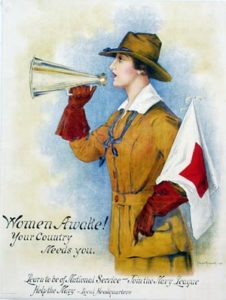
I have always believed content drives design for any communications product, from a paper brochure to a website. What good is a supposedly “well designed” or “eye-catching” poster, billboard, flyer, manual or website if it doesn’t get the result you want – and the result is not just people looking at it and saying, “Oh, what a lovely design,” but what they DO and how they THINK after experiencing that product.
I will never forget being handed a company brochure at a nonprofit where I had just started and being told, “It won a design award!” I looked it over and said, “The text is too small for someone who needs glasses to read and dark green text on a light green background makes it really hard for ME to read as well.” I didn’t last long at that job…
Then there was the designer who so proudly presented me with his design for an upcoming event, and it was beautiful, but it was missing the date, the time and the location of the event, and it implied the event would be something that it wasn’t. But, hey, it was pretty! He was crushed when I told him he had to add the necessary info. “But… it ruins the design…” he sighed…
And then there was the nonprofit that decided it wanted to delete at least half the text off of its web site. It did so, resulting in an onslaught of email from people asking for more information, and me having to constantly cut and paste, over and over, the information that used to be on the web site.
My attitude about text – about the importance of clarity and completeness over just brevity for brevity’s sake – puts me at odds with many a designer. But it recently put me at odds with people who believe “too much text intimidates young people” and, therefore, you should cut down on the number of pages on your web site.
Bollocks.
Yes, I get it – most people don’t read everything on a web site. That has ALWAYS been true. I have always known people don’t go to a website and read it like a book – they go to a website, read the home page, and if they are enticed, or in need of certain information, they click on something and read more.
What’s great about the web is that you can create a site that appeals to BOTH of those groups of information consumers, those who just need a bit of info, and those who want to dive deeper.
Also, people often go to a web site not as a fresh, new visitor who need something shiny waved at them to be intrigued – there are those that go to a web site looking for specific details. They may be a current volunteer who wants to get clarification regarding the purpose of your organization’s community engagement. They may be someone who wants to understand more about why the issue your nonprofit addresses exists at all. They may be someone who is doing a reference check on someone claiming to be on your board. It may be a CURRENT STAFF MEMBER who wants to stay on brand/message, and to do that, needs to know what the official wording is regarding some program or practice.
How many times have I joined an organization as a new employee or consultant and my only source for vital historical information I need is the organization’s web site? And how many times has the organization not had that vital information on their new, shiny, modern, streamlined website, so I have to go find it on an old version of their site on the Internet Wayback Machine?
Absolutely, when someone opens a web page, they shouldn’t feel overwhelmed. Some are overwhelmed by lots of text. I’m overwhelmed by lots of photos – because I rarely go to a web site for photos, I go for information, and I feel like I’m lost in a sea of images and I search for real, actual information I need.
The philosophy is to put JUST enough information on a web page to get people to sign up for an event, put JUST enough to get people to buy a ticket. I get that. And, certainly, for landing pages, it’s a good philosophy. But there are many users who are going to need more information. So why not have a link to more information so people like me, who are NOT going to buy that ticket or sign up to volunteer based on just a paragraph or two, can dive deeper? Believe me, there is PLENTY of room on your web site for that additional information. There is plenty of room on the web for more web pages.
One last note: I have once again been in a position to create tasks for volunteers and then to recruit and involve volunteers in those positions. I tried the less-is-more for role descriptions – and ended up with an endless number of questions from volunteers, asking for all those details I was leaving out of my pithy recruitment posts. Lesson learned: I went back to long-form.

If you have benefited from this blog, my other blogs, or other parts of my web site and would like to support the time that went into researching information, developing material, preparing articles, updating pages, etc. (I receive no funding for this work), here is how you can help.



